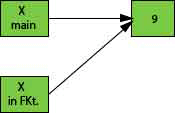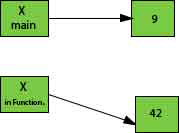

Python Interview Questions And Answers
What is Tibco Spotfire?
Users can integrate data in a single study and receive a comprehensive perspective of the results using Spotfire’s interactive display. Spotfire software helps businesses become more intelligent by providing AI-driven analytics and making it easy to plot dynamic data on maps.
Key features of Tibco Spotfire
Quick deployment [tibco spotfire]
Product templates and example solutions are among the freely available support tools that will assist you in getting started quickly. Users of the system can also share tips and ideas, videos, articles, and other useful material in the TIBCO Community.
Analysis
TIBCO Spotfire mixes real-time streaming data with current and historical data from all repositories and sources for big data analytics. tibco spotfire , TERR / R, H2O, or ML / MLlib are used with Hadoop and Spark to identify historical trends.
Integration
For efficient collaboration, use discussions and comments, as well as filtered analytical reports to provide pertinent information. Add comments to the marked data for more accurate data display, and your audience will be able to simply browse the analytical results.
Easy information access:
Spotfire allows for the secure connection and integration of data from files, relational and NoSQL data warehouses, OLAP, Hadoop, and web services, as well as cloud applications such as Google Analytics and Salesforce.com. IoT (MQTT, OSI PI), social networks (Twitter, IFTTT), and other streaming data sources.tibco spotfire tutorial
Visual data mining that is intelligent
Because of the use of clever visual analytics, a recommendation master based on artificial intelligence technologies (What is Tibco Spotfire), and a set of full-featured data detection tools, the time it takes to collect relevant information is greatly reduced.
Imminent Analysis
Spotfire makes it simple to work with predictive models because to its independent predictive analytics. You will have a much higher chance of predictive analytics than just “creating nice graphs” thanks to an integrated operating environment implementation of T TIBCO Enterprise Runtime for the R (TERR), connectors PMML, H2O, and Sparkman, as well as the functionality to connect to the server,tibco spotfire
SAS.
Integrated location analytics
Identify the impact of the geographical component on the structure of your analytics in real time. Spotfire’s multi-layer mapping features allow you to connect to multiple map services, allowing you to pick and choose which base maps to show essential business data on.
Critical information
Spotfire automation services allow you to activate the online monitoring system Stream Base when you exceed thresholds or rules, allowing you to quickly determine the source of the problem.(tibco spotfire)
Proven Scalability: The Spotfire platform has demonstrated consistent performance that meets the most stringent implementation requirements. Using capabilities like reallocating resources for multiple workloads,tibco spotfire adding and removing nodes, and intelligent resource pooling routing, administrators can be confident that business-critical analytic programs are operating at the highest level possible.
What are the eligibility requirements to get certified?
The eligibility requirements to get certified are:
Must be 10 years of experience in the b2b software industry
Must have at least two years of experience with Tibco PSA
tibco spotfire
Installation steps of Tibco-Spotfire.
Step 1: Get the software you’ll need.
Step 2: Gather the information you’ll need.
Step 3: Set up the database in Spotfire: On the Oracle database. On the subject of SQL
Step 4: Run the setup for Spotfire Server.
Step 5: Apply the hotfix to the problem.
Step 6: Make a file called bootstrap.xml.
Step 7: Make a simple Spotfire Server configuration and save it.
Step 8: Make a user called “administrator”
Frequently asked interview questions
Is TIBCO Spotfire part of the Core Lab?
Enterprise Player is a TIBCO product that Core Lab licenses for use in our Joint Industry Projects. Core Laboratories is responsible for the Analytical Templates. Core Lab-created RAPIDLink to make it easier to move data from our RAPID database to our Spotfire Analytical Templates. RAPIDLink automatically sends any data to which a client is authorized.
What is the S Programming Language?
Both TIBCO Spotfire S+ and R are built on the award-winning S programming language. The S programming language is the only one designed exclusively for exploratory data analysis and statistical modeling, allowing you to construct statistical applications five times faster than with other languages.
Spotfire Analytics & its advantages
TIBCO Spotfire Analytics provides a lightning-fast and flexible environment for analyzing crucial data, allowing you and your company to make better, more informed decisions. Spotfire gives business and technical professionals the ability to quickly examine their data, helping them identify important insights to give them a distinct competitive edge, thanks to sophisticated in-memory analysis, predictive modelling, and a highly visual and intuitive interface.
What are the most important features of TIBCO Spotfire 6.5?
Data Use that is Faster and Easier spotfire tibco
Create Spotfire applications that connect directly with sophisticated large data sources while shielding end users from the complexities.
Quickly and easily access massive amounts of data
Create sophisticated apps more quickly and make use of your existing database skills.
4GL is an interpreted object-oriented language.
Rapid prototyping and interactive exploration.
Vector, matrix, array, data frame, list, and many others are examples of rich data structures.
Functions, objects, classes, methods, and libraries that are defined by the user.
What exactly is Spotfire Cloud?
Spotfire Cloud is the most popular data visualization and business analytics software on the market today. From their laptop or tablet, users may create attractive, interactive visualizations with Spotfire. Traditional business intelligence solutions require the user to know a certain amount of information. Spotfire helps users to examine trends, anomalies, and previously uncovered insights in their data by explaining what inquiry to ask first.
Conclusion
Tibco offers a certification program called Tibco Spotfire Certification. You can use it to work towards becoming a certified Tibco Spotifire consultant. The advantages of this qualification can help you get your foot in the door whether looking for work or moving up in your current organization.
Hope the article cleared your mind.
Here you will find answers to questions on everything from the features you can expect, all of which makes up part of the salesforce training from Asha24.
Python was created by Guido van Rossum, and released in 1991.
It is a general-purpose computer programming language. It is a high-level, object-oriented language which can run equally on different platforms such as Windows, Linux, UNIX, and Macintosh. Its high-level built-in data structures, combined with dynamic typing and dynamic binding. It is widely used in data science, machine learning and artificial intelligence domain.
It is easy to learn and require less code to develop the applications.
It is widely used for:
Python is used in various software domains some application areas are given below.
Advantages of Python are:
Interpreted: Python is an interpreted language. It does not require prior compilation of code and executes instructions directly.
Free and open source: It is an open-source project which is publicly available to reuse. It can be downloaded free of cost.
Extensible: It is very flexible and extensible with any module.
Object-oriented: Python allows to implement the Object-Oriented concepts to build application solution.
Built-in data structure: Tuple, List, and Dictionary are useful integrated data structures provided by the language.
Portable: Python programs can run on cross platforms without affecting its performance.
PEP 8 stands for Python Enhancement Proposal, it can be defined as a document that helps us to provide the guidelines on how to write the Python code. It is basically a set of rules that specify how to format Python code for maximum readability. It was written by Guido van Rossum, Barry Warsaw and Nick Coghlan in 2001.
A function is a section of the program or a block of code that is written once and can be executed whenever required in the program. A function is a block of self-contained statements which has a valid name, parameters list, and body. Functions make programming more functional and modular to perform modular tasks. Python provides several built-in functions to complete tasks and also allows a user to create new functions as well.
There are three types of functions:
Example: A general syntax of user defined function is given below.
There are two parameters passing mechanism in Python:
By default, all the parameters (arguments) are passed "by reference" to the functions. Thus, if you change the value of the parameter within a function, the change is reflected in the calling function as well. It indicates the original variable. For example, if a variable is declared as a = 10, and passed to a function where it's value is modified to a = 20. Both the variables denote to the same value.

The pass by value is that whenever we pass the arguments to the function only values pass to the function, no reference passes to the function. It makes it immutable that means not changeable. Both variables hold the different values, and original value persists even after modifying in the function.

Python has a default argument concept which helps to call a method using an arbitrary number of arguments.
Python's constructor: _init__ () is the first method of a class. Whenever we try to instantiate an object __init__() is automatically invoked by python to initialize members of an object. We can't overload constructors or methods in Python. It shows an error if we try to overload.
It is a string's function which converts all uppercase characters into lowercase and vice versa. It is used to alter the existing case of the string. This method creates a copy of the string which contains all the characters in the swap case. If the string is in lowercase, it generates a small case string and vice versa. It automatically ignores all the non-alphabetic characters. See an example below.
To remove leading characters from a string, we can use lstrip() function. It is Python string function which takes an optional char type parameter. If a parameter is provided, it removes the character. Otherwise, it removes all the leading spaces from the string.